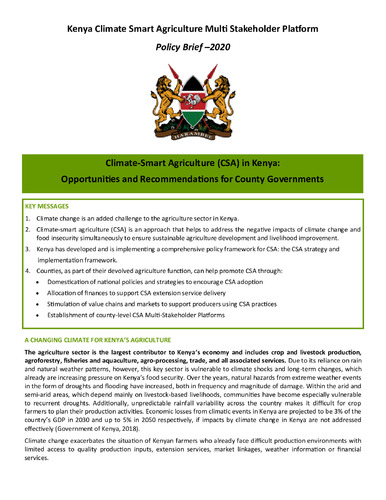Climate-Smart Agriculture (CSA) in Kenya: Opportunities and Recommendations for County Governments
The agriculture sector is the largest contributor to Kenya’s economy and includes crop and livestock production, agroforestry, fisheries and aquaculture, agro-processing, trade, and all associated services. Due to its reliance on rain and natural weather patterns, however, this key sector is vulnerable to climate shocks and long-term changes, which already are increasing pressure on Kenya’s food security. Over the years, natural hazards from extreme weather events in the form of droughts and flooding have increased, both in frequency and magnitude of damage. Within the arid and semi-arid areas, which depend mainly on livestock-based livelihoods, communities have become especially vulnerable to recurrent droughts. Additionally, unpredictable rainfall variability across the country makes it difficult for crop farmers to plan their production activities. Economic losses from climatic events in Kenya are projected to be 3% of the country’s GDP in 2030 and up to 5% in 2050 respectively, if impacts by climate change in Kenya are not addressed effectively (Government of Kenya, 2018).

